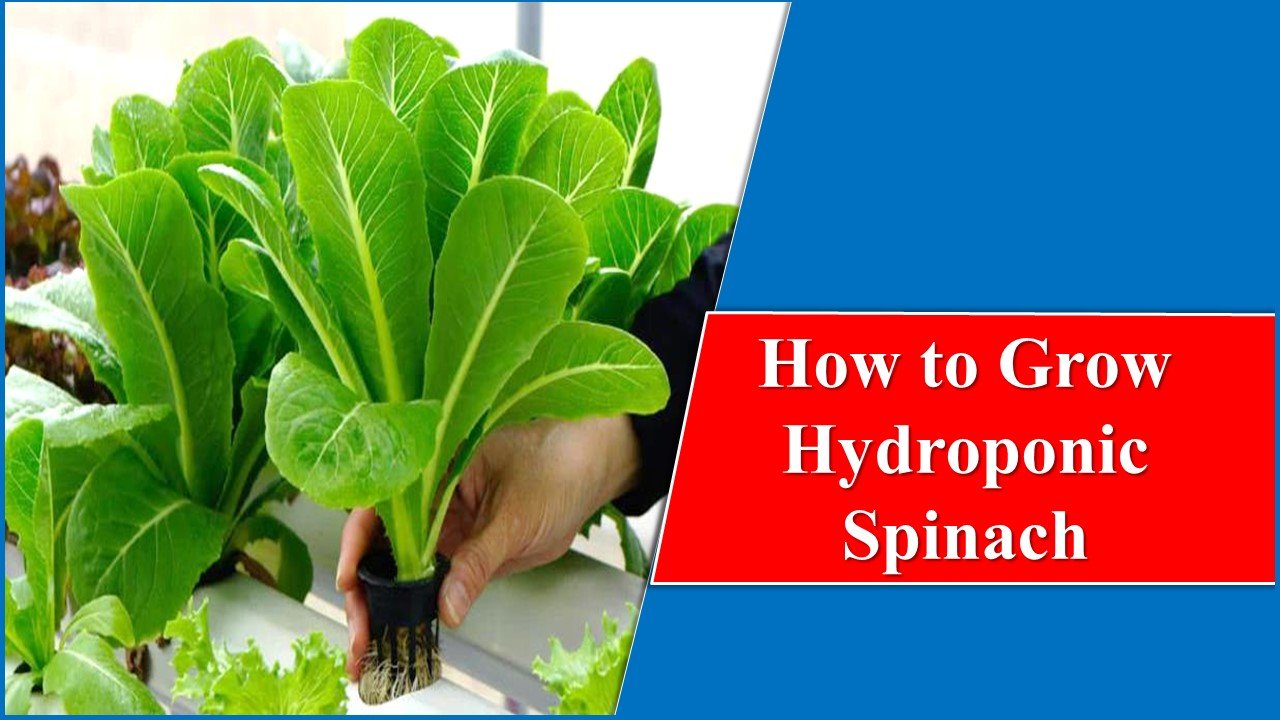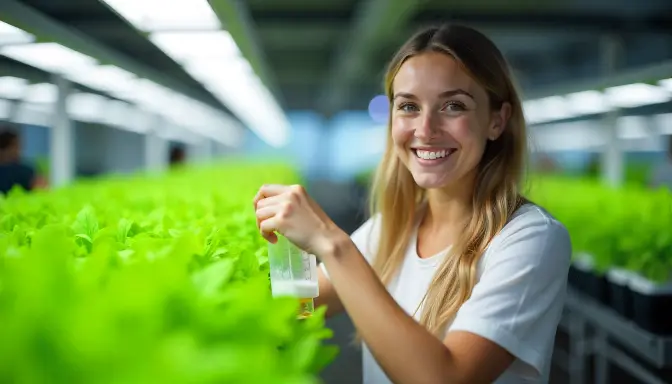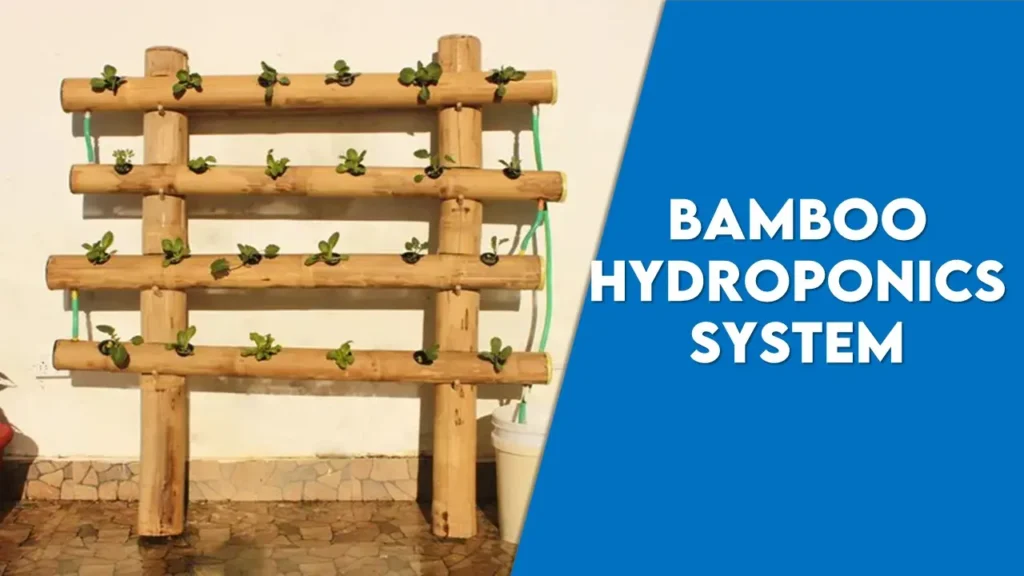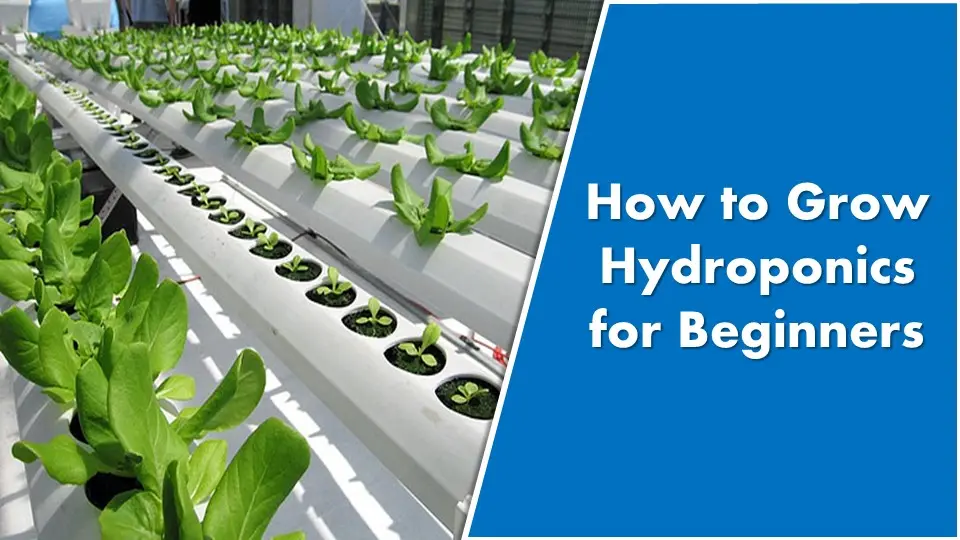How to Grow Hydroponic Spinach: A Wonderous Delight
Hydroponic Spinach or Spinach is a nutrient-rich leafy vegetable, both an annual and biennial crop for leaf and seed production, respectively. in this article we will cover How to Grow Hydroponic Spinach. Spinach gives rise to the rosette of fleshy leaves that are smooth or crinkled in appearance during the vegetative phase which later develops into narrow, pointed leaves. The hydroponic technique is a smaller part of hydroculture that involves growing plants in nutrient-enriched medium solution rather than in soil.
Numerous plants can be grown with the help of hydroponic techniques amongst which leafy vegetables are considered the grower’s first choice. From the options of leafy greens, spinach is a crop that does amazingly well under hydroponics. Hydroponic spinach is comparatively easier to grow than other hydroponically grown crops and provides year-round fresh greens. On the contrary, it would be more challenging because it needs certain requirements that must be fulfilled if one has to raise healthy hydroponic spinach for the first time. So, in this article, information is provided about those important criteria.
Health Benefits of Hydroponic Spinach
Spinach is a nutrient-dense, healthful green vegetable due to the presence of vitamins and minerals and also provides multiple benefits for skin, hair, and bone health. It also contains many plant compounds viz, leutin, nitrates, quercetin, and zeaxanthin that are vital in improving eye health and reducing inflammation. Eating spinach regularly helps to manage diabetes and asthma, prevent cancer, and lower BP. One cup of raw hydroponic spinach provides the following:
| Calories | 7 |
| Protein | 0.86 g |
| Calcium | 29.7 mg |
| Iron | 0.81 g |
| Magnesium | 24 mg |
| Potassium | 167 mg |
| Vitamin A | 141 mcg |
| Folate | 58 mcg |
Best Picks for Hydroponic Spinach:
Many varieties can be grown well in the hydroponic system out of which the best picks are mentioned below:
| Bloomsdale | Is heirloom spinach variety, easy to grow and has curly dark green leaves |
| Monnopa | It is a low- acid variety with sweetest leaves |
| New Zealand Spinach | It produces triangle- shaped leaves that are delicious to palate |
| Noble Giant Spinach | With glossy dark leaves and is most common spinach variety |
How to Grow Hydroponic Spinach: Hydroponic Spinach Cultivation
While many hydroponic systems can be utilized to grow hydroponic spinach, it strives in a system that permits an even and continuous nutrient supply. The best-recommended systems include the nutrient film technique and deep water culture method. Excellent oxygenation and nutrient delivery are the main benefits of these two that ensure rapid and healthy growth of spinach.
1. NFT (Nutrient Film Technique):
It is an ideal hydroponic system to grow hydroponic spinach. It makes use of shallow trays that contain nutrient solutions to supply plants water and nutrients. Sterilize the NFT tray, tubing, and pump with mild bleach solution before planting the seedlings. The seedlings are kept in net pots with the already contained medium like rock wool, perlite, and vermiculite, and make sure that it will allow enough airflow to the roots of hydroponic spinach. The pH range of the solution should be somewhat in the range of 6-7 along with the light requirement of at least 12 hours per day.
2. Deep Water Culture (DWC):
In this method again, spinach roots are submerged in a nutrient solution that helps to promote fast growth. The consistent supervision of water quality and oxygen to maintain healthy and good-quality roots are the main requirements.
Growing Process: Hydroponic Spinach Farming
- Seeding of Hydroponic Spinach Seeds:

Soak the spinach seeds in warm water for 1 hour to make them soft and easy germination. Place the seeds into the hydroponically grown media that consists of rock wool cubes of 2 cm х 2 cm dimensions. Regular watering is essential to keep the rock wool wet and keep the tray in a shady area to dry. After 2-3 days, the seeds started germinating or at least 2 leaves appeared. Then, translocate the hydroponic spinach tray to the area of exposed sunlight.
- Lighting Requirement to Grow Hydroponic Spinach:
Hydroponic spinach requires 12 hours of sunlight daily for best production. Blue light increases chlorophyll production and thereby enhances vegetative growth. Dual spectrum lighting is best for a good hydroponic spinach production. Lighting for hydroponic farming is set at a fixed ratio for maximum productivity.
- Media Preparation for Farming of Hydroponic Spinach:
A water box of height of at least 30 cm or a box of styrofoam should be prepared. Then, make a hole (distance is 10 cm from each other) in the lid of the styrofoam with a diameter of 5 cm.
- Nutrient Requirement:
Once the grower carries out the transplanting of hydroponic spinach, then for approximately 1 week no fertilizer is needed. After which, elevated levels of calcium and magnesium are beneficial. Don’t provide nitrogen in excess because hydroponic spinach is sensitive to nitrogen, and easily gets leaf tip burn. After 2 weeks, increase the nutrient strength to 3/4th for that week and a full dose afterward.
- Planting Method of Hydroponic Spinach:
Put the seeds of spinach that have at least 4 leaves into the net pots or in used plastic cups. Then, fill the seeds with water and keep the hydroponic spinach in an area with adequate sunlight.
- Maintenance and Care:
To prevent the growth of weeds and insect attacks, the grower must do the following things:
- Regularly water but don’t make a puddle on the plant media.
- Manually do the weeding part to suppress the growth of weeds.
- Harvesting of Hydroponic Spinach:
It depends on consumer preference and the market requirement. Generally, the outer leaves are removed every week or 2 weeks. In the case of baby spinach, leaves should be succulent which makes it sell in the market.
The Kratky Method to Grow Hydroponic Spinach

This is another popular method somewhat different from hydroponic systems that depend upon the evaporation process but still is a piece of water culture technique. The principles of Kratky Method are similar to the deep water culture method except for the fact that DWC uses air stone, water level maintenance, and regular monitoring. It requires low maintenance and low hassle, and the setup is similar to the DWC method.
A large reservoir is put up to hold nutrient-enriched medium solution and plants are kept in netted pots with roots immersed in water. The key difference lies in the fact that growers do not need to change the water, add nutrients, adjust pH, etc.
Healthy Hydroponic Spinach Growing: Some Tips
Hydroponic Spinach is somewhat difficult to grow in comparison to other crops like lettuce and herbs due to many issues that can lead to crop failure or the bitter taste of spinach. To upgrade the success rates, follow the given tips that can help in yielding a good amount of indoor hydroponic spinach.
- Advisable points:
- Always use fresh seeds that will take approximately 7-21 days for germination and sow 4-5 seeds per hole to ensure at least one strong, healthy seedling per cell.
- Seeds can be stratified in the refrigerator (1-3 weeks) before sowing as recommended by commercial growers in producing healthy plants.
- Keep the seeds in moist conditions to avoid poor germination rates and unthrifty plants.
- Sow the seeds every 2 weeks to ensure a continuous supply of fresh hydroponic spinach till harvest. Also known as stagger planting.
- The temperature should be regulated carefully since spinach is a cool season crop that requires a daytime temperature of around 18-21 ℃ and a night-time temperature of 16-18 ℃. An increase in temperature causes bolting and bitterness of leaves.
- Avoid excessive amounts of light. 12 hours of light per day is optimum for hydroponic spinach. The blue color spectrum promotes leaf growth and is advisable for producing hydroponic spinach.
- Harvesting of spinach should be done at its desired size and multiple times as it will pursue to grow new leaves. Make use of scissors or a sharp knife for cutting the leaves at least 1 inch above the crown.
- Increased Plant Density:
Owing to its hardy nature, spinach can be grown in a variety of climatic conditions either winter or summer. Growers utilize the closed system to raise hydroponic spinach that has a 1 m width with a divider in mid that results in 2 channels of 0.5 m each. The planting density ranges somewhere between 8 and 16 plants per square meter while for baby spinach 100 plants/square meter is suitable.
The plant density of hydroponic spinach is reliable on many factors like the climate of the area in which spinach is growing, the variety and type of spinach, and the spray equipment used to control pest and disease incidence. If a system is placed in the vicinity of an open field that has a susceptibility to insect pests and diseases, then the grower should decrease the planting density of hydroponic spinach to avoid the chances of insect attacks or populations.
Advantages of Hydroponic Spinach:
| Year-round availability of fresh leaves | Regardless of the harsh weather conditions, hydroponic spinach can be grown all around the year in an indoor hydroponic system, where the spinach can not be grown at that specific time. |
| Less use of water | Hydroponic spinach is proven to be water-efficient due to the recycling and reuse of nutrient solutions especially in places where the water availability is scanty. |
| Reduces pesticides use | Owing to the close structure of hydroponic systems, the incidence of pests and diseases is low which in turn reduces the dependence on pesticides. |
| Rapid growth and higher yields | Due to the regular supply of nutrients and controlled environmental conditions, hydroponic spinach grows more rapidly than soil-grown spinach. Also, more efficient use of space and resources contributes to the higher returns on investment done by farmers/growers. |
| Consistent quality | The controlled environmental conditions in which hydroponic spinach is grown cause a more consistent supply of it to the market. High-quality consistent spinach is preferable by consumers. |
Summing Up:
While the popularity of hydroponic techniques continues to increase, the selection of nutrient medium and pH regulation becomes more important. For sustainable and resilient farming practices optimizing pH levels and nutrient concentrations yields abundant produce in the case of hydroponic spinach. It comes with a lot of benefits viz., less use of water, year-round crop production, and less dependence on pesticides along with a nutritious leafy green vegetable. There is an urgent need to explore these techniques so that the upcoming time of hydroponic spinach will be green and promising.
Join Our Hydroponics Growers Group!
Connect with fellow hydroponics enthusiasts, share your ideas, ask questions, and grow together as a community.
👉 Join WhatsApp Group






